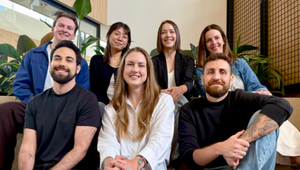
The Fight to Combat Loneliness Continues in 2024 and Beyond

Loneliness has reached epidemic levels around the world and global communications agency Citizen Relations is taking it seriously. With the release of its ‘Citizen Connections Report’ last year, it became clear that we were in the midst of a global connection crisis.
So, how are we doing today, one year later? Have things improved at all? Unfortunately, as this year’s report makes evident, the answer is still, largely, no. While it’s not all doom and gloom – there’s a much larger awareness of how damaging loneliness is to society – the fact is that it’s as prevalent as ever. This is manifesting itself in various ways across the generations, but is especially evident with younger ones like gen z. Having been the first to live through the era of online classes and enter the workforce at a time of increasing work-from-home and hybrid models, this demographic simply hasn’t gained the social exposure that was traditionally associated with a healthy and balanced lifestyle.
Unfortunately, the struggle doesn’t end there either. In recent years, the closure of places where social connection might occur (movie theatres, malls and night clubs, for example) means the removal of the sacred ‘third spaces’ – places outside of work and home which, historically, have been pivotal in enabling people to ‘step out’ and get away from the rigours of day to day life. Crucial locations and tools for bridging the social gap are vanishing into the ether.
With all that in mind, it’s vital for brands and agencies to address this in their work. Last year, Mount Sinai hospital in Toronto, Canada found that 45,000 yearly deaths were due to loneliness, so this is a real crisis. LBB’s Jordan Won Neufeldt sat down with Laura Bremer, US president of Citizen Relations, to break down the findings of this year’s report and learn where solutions might lie.
LBB> Last year’s report found that we were in the middle of a loneliness epidemic. So, over the past year, what’s changed? How are we doing today?
Laura> Well, we surveyed 4,000 plus people across North America, the UK and Germany, and unfortunately, more than half feel less connected today versus last year. So, it’s safe to say that loneliness is still just as prevalent as before. But what seems to have changed is the understanding and awareness of how damaging loneliness really is to our society. Over the past year, we’ve seen an increase in the desire for real-life experiences and spaces, whether that’s in dating or in our friendships. Simultaneously, businesses that solely focused on real-life moments have been shuttering down since the pandemic, be it malls, movie theatres, or even public parks. But people have that desire and crave social connection just as much as before.
LBB> Before we deep dive, broadly speaking, what are some of the most crucial takeaways of this year’s report, in your opinion?
Laura> One of our more fascinating finds this year was about ‘third places’ and the increasing need for them. Third places – which are physical spaces that aren’t your home (first place) or work/school (second place) and where you feel at ease and belonging – are crucial to bridging the social connection gaps our society currently faces. The third place is not a new concept – it was coined by American sociologist, Ray Oldenburg, in 1989 – but it’s re-emerging in 2024 as a critical component of our social connection foundation.
Our report found that despite the fact that 83% of respondents have a third place, 74% find something missing in their third place, and 65% can’t find the right fit. So, there’s clearly a gap that needs to be filled, and we think there’s a business and societal opportunity here for brands.

LBB> The report also found that people in younger generations are missing out on this third place more than others. Why is this the case?
Laura> Younger generations have the highest need for, and see the most value in, third places because they are actively seeking community, which has become increasingly harder to find. Gen z and millennials have had a very different experience from older generations, and the workplace is a prime example. A lot of them either entered the workforce in the middle of a pandemic or were the first adopters of online classes. This means no water cooler chats, no impromptu happy hours, etc.. With so many companies functioning in a completely remote or hybrid environment, these generations haven’t had the opportunity to foster bonds the way older generations did.
And it’s not just a different experience in the workplace. The many public spaces older generations used to frequent – malls, movie theatres, public parks – are slowly diminishing. Coffee chains (we won’t name names!) now prioritise online pickup or drive through rather than encouraging people to sit and stay, and movie theatres have seen lower footfall since people can stream anything they want, whenever they want. Meanwhile, night clubs have shuttered down, shopping malls are going out of business, and the many places so many of us would go to in order to just ‘step out’ are no longer an option.
Simply put, the younger generations haven’t been able to experience a lot of the things older generations have.

LBB> To this end, many of the survey respondents expressed that they’d even make sacrifices – like giving up sex – to preserve their third place. Why do you think they’d be so willing to do this?
Laura> Because there’s now an awareness of what loneliness can do to you, and people want to take matters into their own hands. Younger generations are the most affected by loneliness, but they are also the ones most willing to make sacrifices to save their third place. And, we can see that they’ve already started taking matters into their own hands, using their personal interests to lead the way. There’s a boom in the emergence of running clubs, knitting clubs, silent reading parties, and even dining with strangers – all an indication of the strong desire to build community and find like-minded people.
LBB> Do any of these takeaways surprise you? Why?
Laura> What really stood out was the nuanced relationship men and women have with their third places and with social connection. Our report’s findings were a complete shift from the preconceived ideas of what men want and what women want.
We found that men have an increased desire for deeper conversations and meaningful relationships, and that they actively go out of their way to seek new connections at their third place. Women on the other hand, seek third places as a way to escape their daily routine and responsibilities for some independence and relaxation.
We’ve seen the shift in this direction in consumer behaviour for years, and our findings amplify the need to curate niche experiences that reach beyond the conventional boundaries. It can be an exciting new terrain to explore for many brands.
LBB> Tell us more about this! Should brands, companies and agencies go out of their way to prioritise supporting this demographic? Where does the balance lie between supporting the future without ostracising the industry veterans?
Laura> While our report does highlight the differences between various generations, and the numbers show that younger generations do have a higher need for third places, it isn’t a one size fits all approach. Within these generations lies a variety of subcultures, all with differing needs and values. So, that in itself is reason enough to not prioritise one over the other.
Instead, the way to create that balance is by focusing on the nuances of every cohort and to not define them solely on generational demographics. While it’s important for all of us in the industry to understand these generational demographics, we need to go beyond that too.

LBB> How does this translate through brand work? What should more agencies and marketers be aware of when creating today’s campaigns?
Laura> As agencies and marketers, we need to understand these nuances in our consumers. Third places have the power to bridge the social connections gap our society faces today, and brands have the power to facilitate that. Consumers are seeking out experiences that will resonate with them, and brands can create those experiences by cultivating a third place.
It doesn’t just have to be ‘creating’ a third place either. There are so many avenues when it comes to this – reimaging a third place, partnering with an existing third place, or even using your own space as a third place. But in either case, the way to stand out is by creating a space without the expectation of monetary gain, but rather for fostering connection, which will ultimately lead to brand loyalty and bring in revenue.
LBB> Finally, with all this in mind, what are Citizen’s goals for 2025? And are there any parting thoughts you’d like to leave readers with?
Laura> Our goal with this report is to support brands in understanding the opportunity in front of them. Third places can create significant impact, and our role is to help our partners in delivering that.
As architects of communication, we know that conversation is the catalyst for connection, and we’re here to help our partners make those conversations count. What our report shares is just one slice of our data, and our team of experts can support brands in getting those conversations started.















